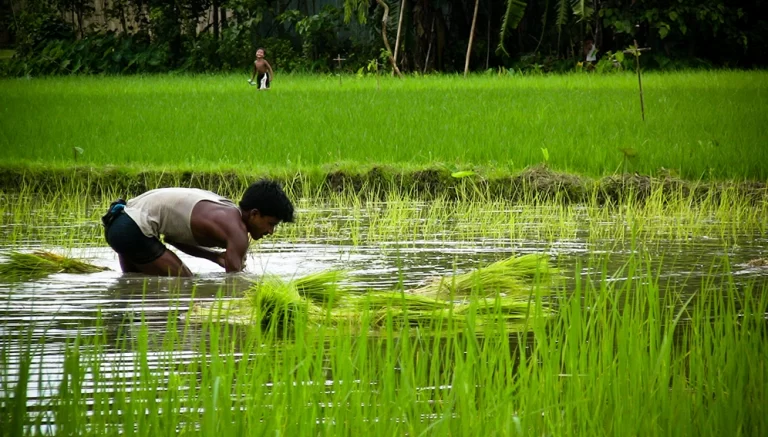
Pumped groundwater is replenished during the monsoon season. ‘Bangladesh Water Machine’ could work elsewhere to combat climate change impacts.
By Sanjeet Bagcchi
NEW DELHI
The pumping up of groundwater by Bangladesh’s 16 million smallholder farmers has led to a massive storage capture of underground reservoirs rivalling the storage capacity of the world’s large dams, according to a study.
Published in Science, the study said that groundwater-fed irrigation had transformed much of Bangladesh’s single-crop, rain-watered floodplains into highly productive double-cropping and, in places, triple-cropping lands to make the country the world’s fourth highest producer of rice.
The researchers say the sustainable irrigation process could be replicated in other areas affected by the impacts of climate change which is intensifying extreme weather events worldwide.
In Bangladesh, 90 per cent of rainfall occurs during the May to October wet season with the rest of the year considered the dry season. According to the study, following droughts that hit the country between 1992 and 1994, there was a rapid increase in the use of groundwater.
The researchers explain how the pumping up of water during the dry season reduces groundwater levels that are restored by leaching from the ponds, rivers and lakes during the monsoon months. The capture of surface water leads to recovery of groundwater levels and helps limit flooding in a process the study authors call “The Bengal Water Machine”.
“The Bengal Water Machine is a nature-based solution, requiring a comparatively minimal intervention — i.e. shallow irrigation wells that are less than 100 meters below ground level — relative to dams, to increase seasonal capture of freshwater that would otherwise drain to the Bay of Bengal,” said Mohammad Shamsudduha, corresponding author of the study affiliated with University College, London.
The researchers analyzed one million weekly groundwater-level observations from 465 wells across Bangladesh, taken between 1988 and 2018.
Over the past 40 years, according to the study, monsoon rainfall has recharged 75 to 90 cubic kilometers of water in Bangladesh, a volume equivalent to twice the reservoir capacity of the Three Gorges Dam in China.
Shamsudduha noted that the phenomenon has enabled farmers to transform the country’s economy and food security, and improved resilience to climate change.
“In order to benefit from the operation of the Bengal Water Machine, we recommend identifying the potential areas where further freshwater capture is possible under current and projected changes in monsoon rainfall and irrigation demand,” Shamsudduha told SciDev.Net. “Continuous monitoring of groundwater levels and abstraction can ensure the sustainability of the Bengal Water Machine”.
Shafi Mohammad Tareq, professor at the Department of Environmental Sciences in Jahangirnagar University in Dhaka, Bangladesh, told that the study has implications for the future estimation of groundwater recharge and use in the agriculture sector for the production of food grain in densely populated Bangladesh.
According to the researchers, wider replication of the study findings may be possible, for example in Vietnam’s Mekong delta and the delta of China’s Huang He River which are prone to the effects of climate change. The Bengal Water Machine can help augment international food security and durability to climate extremes caused by global warming, they said.
_________________
Courtesy: SciDev.Net (Published on October 3, 2022)